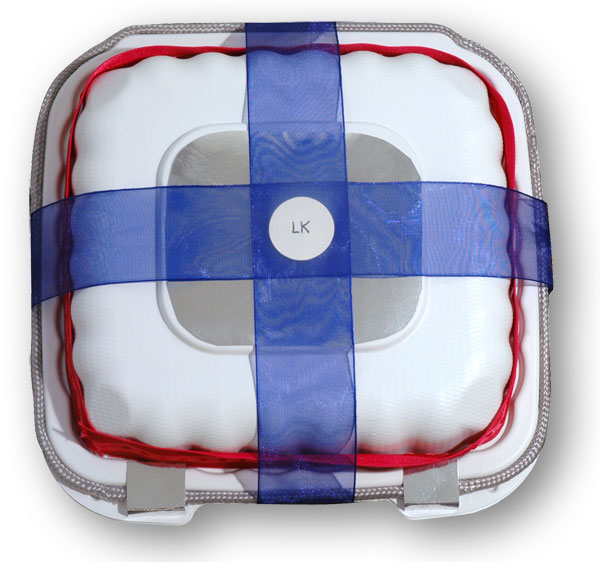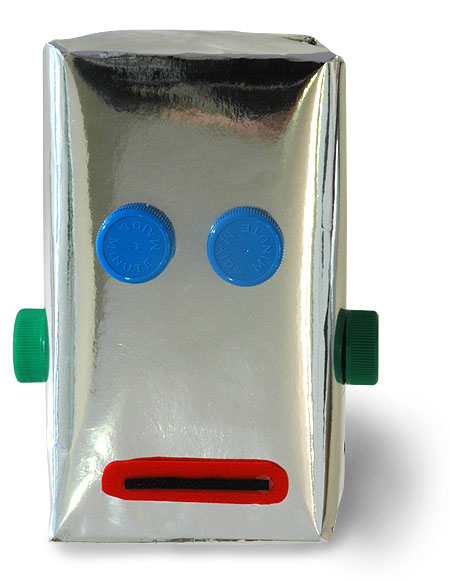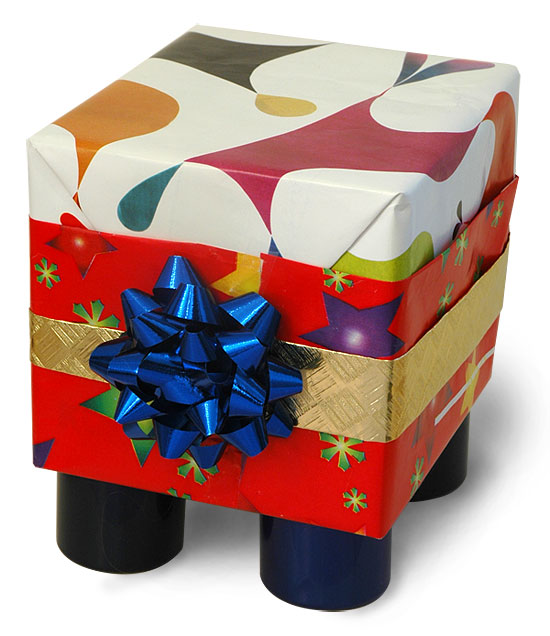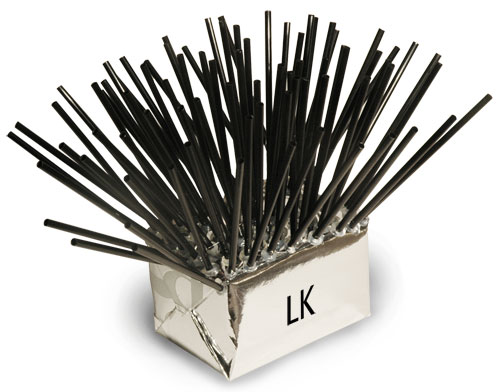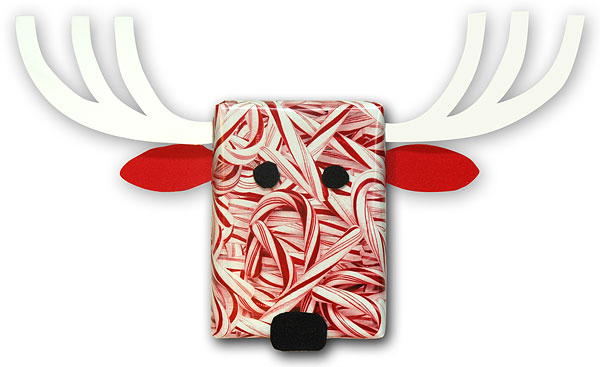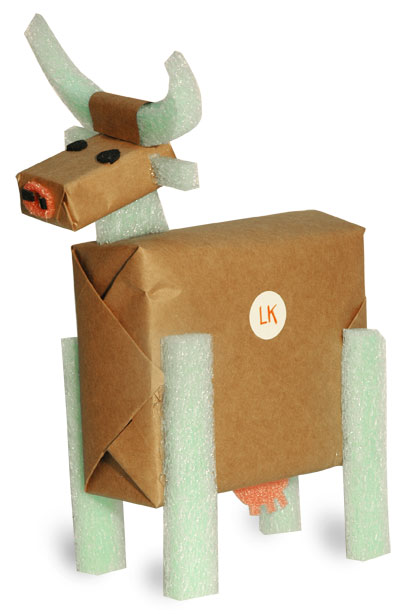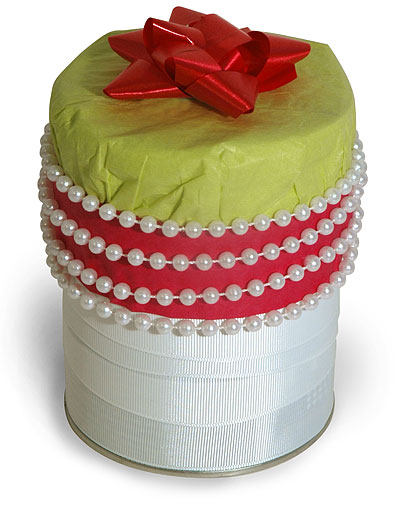 When I’m running out of wrap time, I reach for ribbon and tissue. In this case I wrapped a tin of coffee with a large white ribbon, which covered the entire tin. I capped it with a piece lime-green tissue. The third layer is a piece of red paper folded into a “ribbon.” The folding gives this quasi-ribbon a satisfying dimension and a softened edge.
When I’m running out of wrap time, I reach for ribbon and tissue. In this case I wrapped a tin of coffee with a large white ribbon, which covered the entire tin. I capped it with a piece lime-green tissue. The third layer is a piece of red paper folded into a “ribbon.” The folding gives this quasi-ribbon a satisfying dimension and a softened edge.
Then I added the string of molded plastic pearls, using occasional very-tiny dabs of hot glue to keep it in position. I finished it with a red pre-fab bow.
This simple banded design has a variety of textures. The result is very pleasing, especially considering that it took very little time and no planning. I just started and kept adding until the wrap declared its completion.
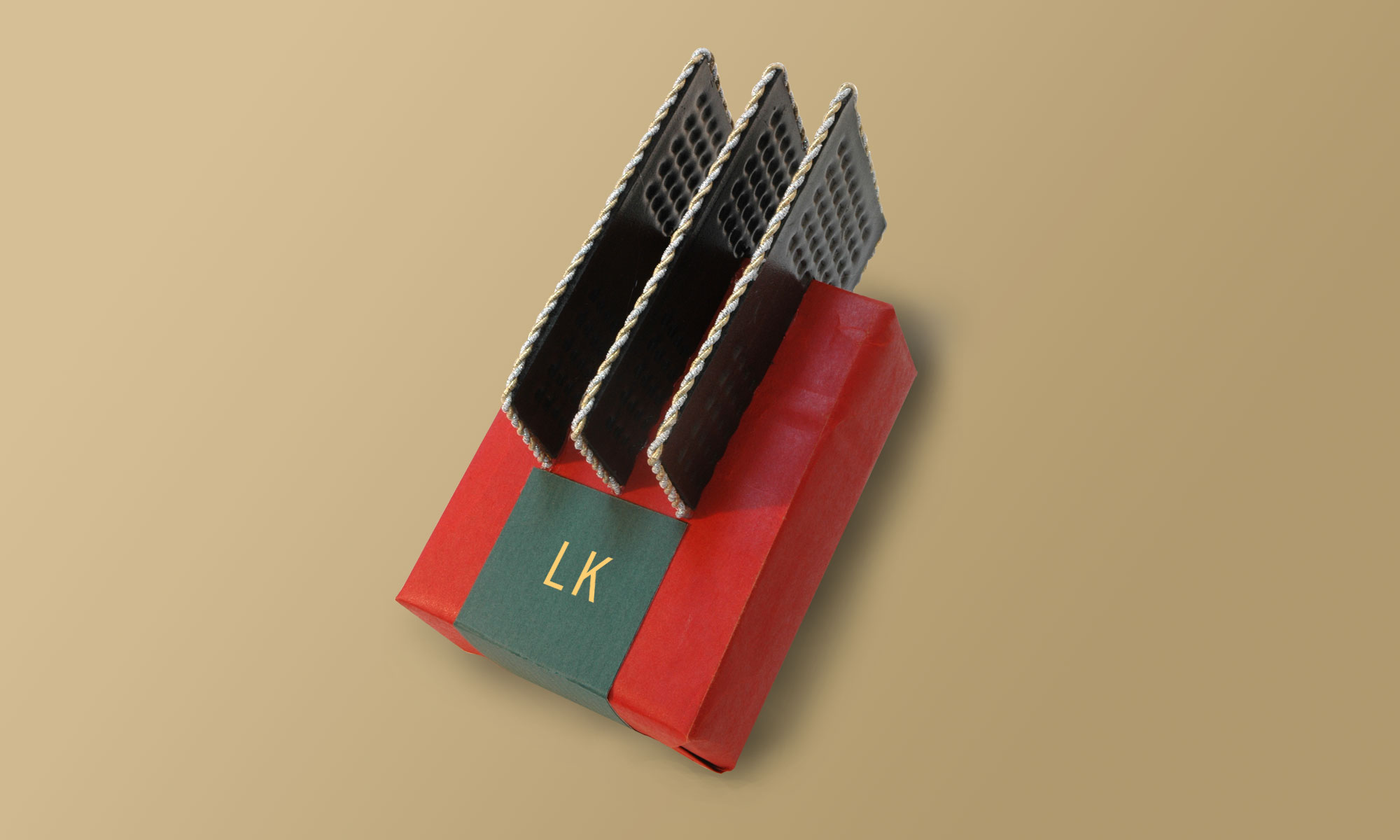
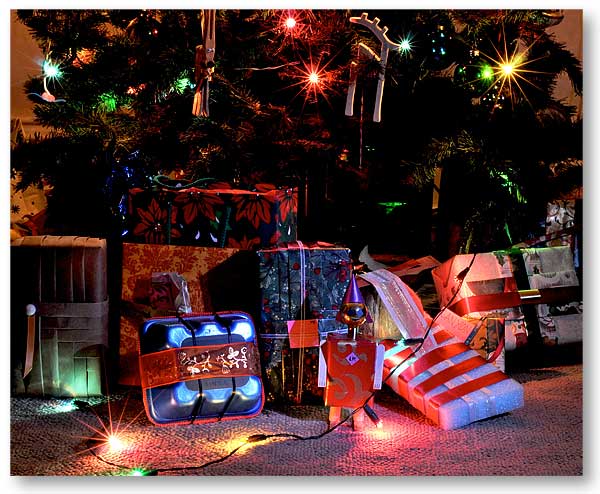
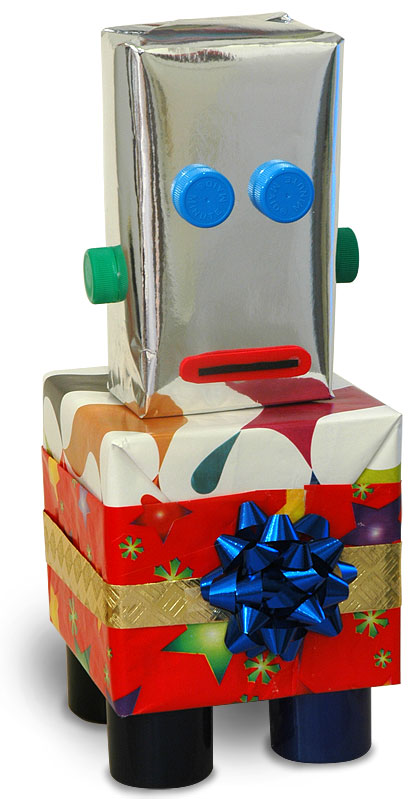
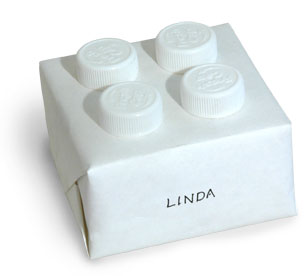 This is a quick wrap if you have been saving your carton-caps from milk or juice cartons. Wrap the gift in plain white paper. Glue on four caps. Now you have a scaled-up imitation of one very common piece of a common building-block toy.
This is a quick wrap if you have been saving your carton-caps from milk or juice cartons. Wrap the gift in plain white paper. Glue on four caps. Now you have a scaled-up imitation of one very common piece of a common building-block toy.